Most beautiful counties in GD
Writer: Chen Xiaochun | Editor: Stephanie Yang | From: Shenzhen Daily | Updated: 2019-07-01
A+ A- Print
During the 15th China (Shenzhen) International Cultural Industries Fair held recently, a list of the most beautiful counties in China was released. Among the 219 counties on the list, seven of them are in Guangdong. So what are these seven counties and what enables them to garner such an honor? In this article we will examine these counties in Guangdong and their charm.
Dapeng New Area
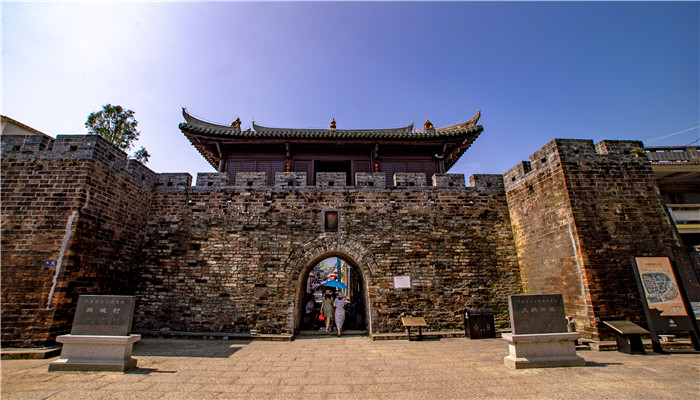
Dapeng New Area was officially established on Dec. 30, 2011. It’s an ecological area, a nest of culture and a renowned tourist destination.
Of Shenzhen’s 56 beaches, 54 are located in Dapeng, of which Xichong Beach was rated as one of the eight most-beautiful coastlines in China. Dapeng Peninsula Geopark is also home to unique ancient volcanic geological relics, unique coastal landscapes, and rare flora and fauna resources.
The excellence rate of Dapeng’s air quality is 97.5 percent, which is close to the standard for international first-class ecological cities. The near-shore sea water quality has met the national Class-A standard. Dapeng’s ecological environment index has topped the province for three consecutive years, thus dubbing it the “green lung” and “back garden” of Shenzhen.
In addition, Dapeng New Area is home to many cultural relics. Cultural artifacts recovered from Xiantouling in 2006 consist of traces and relics from the Neolithic and Shang periods. The remains at Xiantouling, which date back 6,000 to 7,000 years, provide important data for archaeologists preparing a model of the stages of social development during this millennium in the Pearl River Delta. The findings also shed light on interpretative problems in Lingnan prehistoric culture, and archaeologists now posit the existence of the transitional Xiantouling culture named for this site.
Recommended tourist sites: Dapeng Fortress, Dongchong Beach, Xichong Beach, Qiniang Mountain, Jiaochangwei Beach
Lechang County
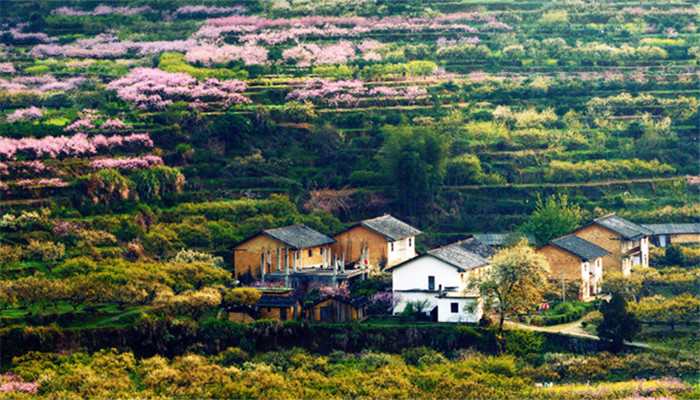
Lechang County, first settled in 598, is inside Shaoguan City. Located at the southern foothill of Nanling Mountain and neighboring Hunan Province, it is considered the north gate of Guangdong and features a mix of special landforms including Danxia landforms, karst landforms, lava caves, underground rivers and rich hot spring resources.
In its south, there are Gufo Karst Cave (Ancient Buddha Karst Cave), Longwang Pond (Dragon King Pond) and Xishiyan Temple, while in its north stands Jinji Mountain, one of the eight most-famous mountains in Guangdong; Jiulong Shiba Shoals which is the first river rafting tourist attraction in China; Zouma Mountain; Jinshan Hot Spring; Bishui Cave; Tonggu Rock and others. It was also once where Guangdong salt and merchandise from other places were processed.
Recommended tourist sites: Jiufeng Town, Gufo Karst Cave, Longwang Pond, Jinji Mountain, Wushan Rice Terrace
Guangning County
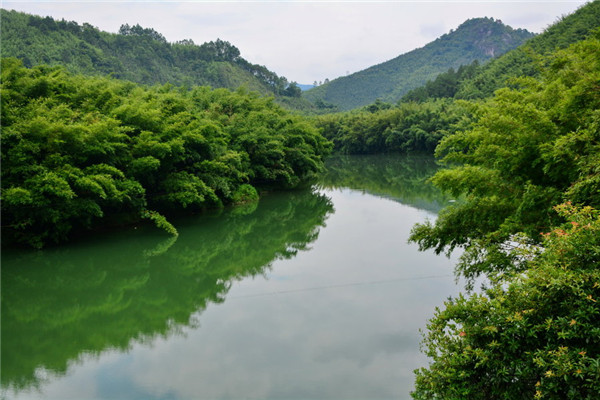
Guangning County was officially established during the Ming Dynasty (1368-1644) in the year 1559 inside Zhaoqing City in mid-west Guangdong. Located within the one-hour living circle of the Pearl River Delta, Guangning County is a mountainous county that is closest to the core area of the Pearl River Delta.
It’s abundance of bamboo makes it a natural oxygen bar and has earned it a reputation as one of the top 10 bamboo towns in China where 1.08 million mu (720 square kilometers) of bamboo forests and 55 varieties of bamboo grow. Tourists from across the country come here to visit the national level bamboo forest park, Muge Town Tourist Ecological Industry Park, Baoding Mountain Scenic Spot, Hengshan Luoguo Ancient Street and other attractions.
Recommended tourist sites: Guangning Bamboo Sea Tourist Area, Baoding Mountain Scenic Spot, Zhou Qijian Former Residence, Luoke Mountain Scenic Spot
Longmen County
Longmen County in Huizhou was officially established in 1496 during the Ming Dynasty (1368-1644). Endowed with a beautiful ecological environment and rich natural resources, it is reputed as a “hot spring village of China,” “China’s village of tangerines” and “folk painting and art village of China.”
The ecological environment has always been the core attraction of Longmen County. Longmen has launched a plan to “build a platform for ecotourism,” revolving around the quality tourist resources of Nankun Mountain.
In recent years, the county has organized an array of events to establish its tourist brands, including Longmen Souvenirs, Longmen Inn and Longmen Banquet.
Located in the north of Longmen County, Lantian Yao Ethnic Village is 18 kilometers from the county center. It is home to 45 natural villages and nearly 9,000 people, and is the only ethnic village in Huizhou.
Recommended tourist sites: Xilin River, Tashan Mountain Forest Park, Nankun Mountain, Lantian Yao Ethnic Village and Wugong Village
Liannan Yao Autonomous County
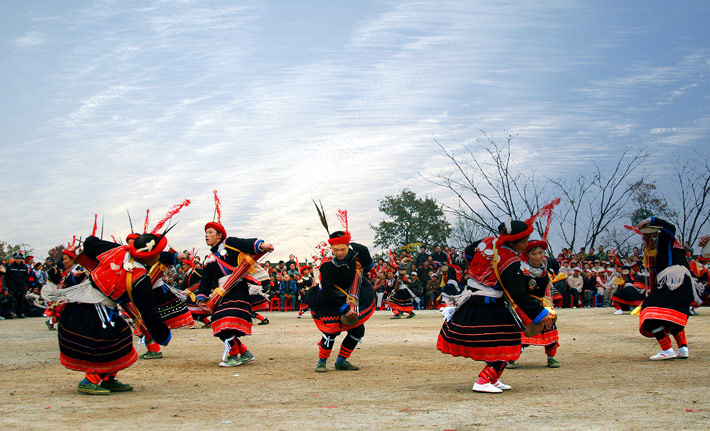
Hailing from Qingyuan City, Liannan Yao Autonomous County was established in 1946. Villages of the Yao ethnic minority are scattered across the rolling mountains. The forest coverage rate of the county is 79.3 percent and it has been granted the title of “Guangdong Forestry Ecological County.”
The county epitomizes the architectural style, folk customs and traditions of the Yao people. Clusters of folk residences of the Ming and Qing (1644-1911) dynasties are embedded into the wooded slope, towering above the spectacular rice terraces extending all the way to the horizon.
The culture and lifestyle of the Yao ethnicity is the biggest highlight of Liannan tourism. The county has successfully held various cultural and festive events. The long-drum dance of the Yao people is a folk dance enjoying a history of over 1,000 years.
Recommended tourist sites: Thousand-Year Yao Village, Guangdong Yao Museum and Liannan Yaoshan Mountain campfire party
Pingyuan County
Pingyuan County in Meizhou was officially set up in 1562 during the Ming Dynasty. It is located at the intersection of Guangdong, Jiangxi and Fujian provinces. In recent years, it has expedited the follow-up construction of key tourist attractions, including Wuzhishi and Mantuo Villa. In 2017, it won the title of “Tourist City of Ecology, Leisure and Health.”
Currently, the county has 10 tourist sites open to the public, including one national 4-A tourist attraction and four 3-A attractions.
Located in Pingyuan County, Wuzhishi Mountain is about 88 kilometers from Meizhou City. The scenic area covers 16.8 square kilometers and has 36 mountains of different shapes and styles. On Oct. 1, 2013, a glass-floored walkway was officially opened to the public. The highest spot on the walkway is about 200 meters above the ground. As the No. 1 “sky walkway” in the province, you can get a magnificent bird’s-eye view of Guangdong, Fujian and Jiangxi provinces.
Recommended tourist sites: Wuzhishi Scenic Area, Mantuo Villa, Nantai Wofo Mountain, Shilong Village and Xiangsi River Scenic Area
Shixing County
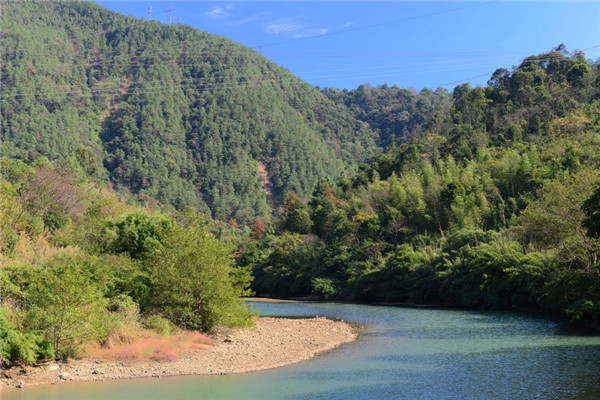
Reputed as “the first ancient prefecture in north Guangdong,” Shixing County in Shaoguan was officially set up in 263 during the Three Kingdoms Period (220-280). It enjoys a time-honored history of over 1,750 years.
Within its area of 2,174 square kilometers, 249 weilong houses (weilous) of the Hakka people are still standing. Together with tulou in Fujian Province and diaolou in Kaiping County of Guangdong Province, these weilous are considered to be a wonder among ancient Chinese castles.
Mantang Hakka Weilou was first built in 1836 during the reign of Emperor Daoguang of the Qing Dynasty. It occupies an area of 13,860 square meters. It is the best preserved Hakka weilong house in Shixing County as well as the biggest Hakka weilong house in Guangdong.
Endowed with a beautiful ecological environment, the county enjoys a forest coverage rate of 77.34 percent. It has been named a State-level ecological demonstration zone. Chebaling National Nature Reserve has a wealth of bird resources. It is suitable for a variety of scientific research and bird watching purposes.
Recommended tourist sites: Mantang Hakka Dawei, Donghuping Folk Culture Village, Tongzhong (Bronze Bell) Village, Chebaling National Nature Reserve